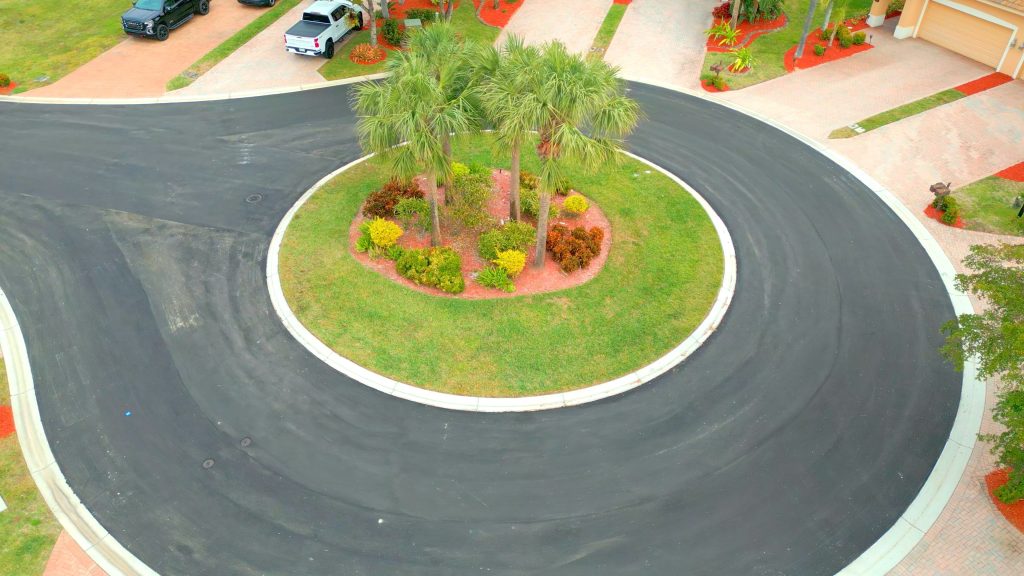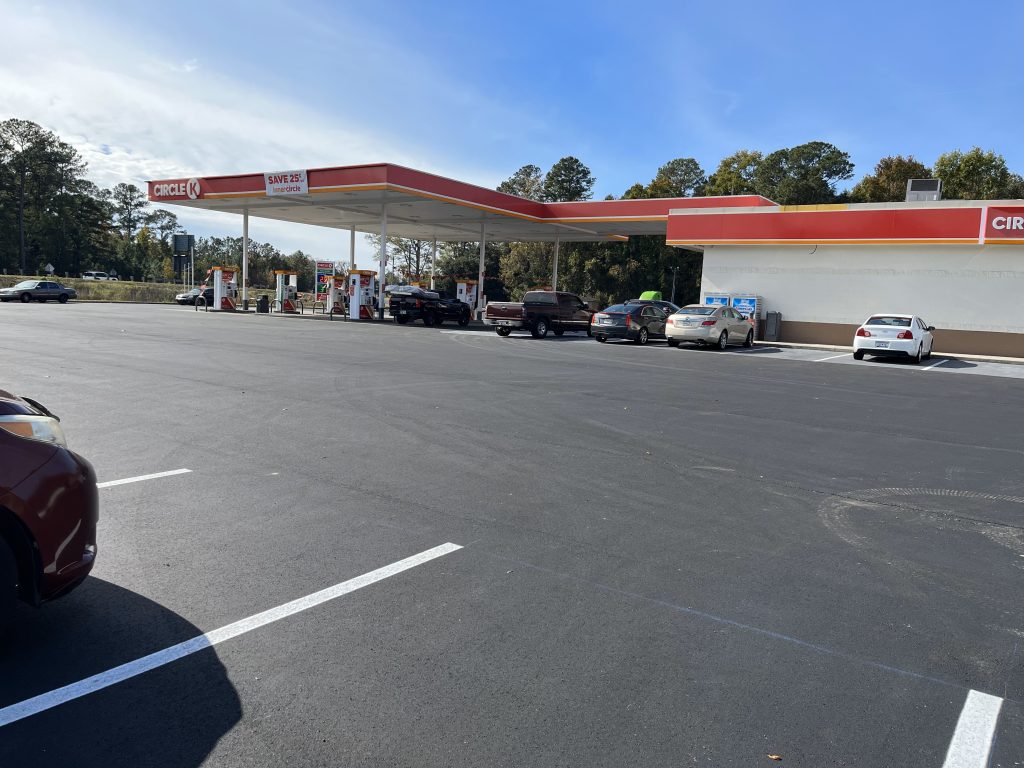A well-paved commercial parking lot is more than just asphalt—it’s your first impression, a reflection of your brand, and a key component of operational efficiency and safety. Whether you’re developing a new property or restoring an existing lot, commercial parking lot paving requires a strategic approach that balances durability, functionality, cost, and long-term value.
Here’s what businesses need to consider before starting a paving project.
1. Evaluate the Current Condition of the Lot
Before any paving begins, conduct a thorough pavement assessment. Look for:
- Surface cracking or raveling
- Low spots and standing water
- Base or subgrade failure
- Drainage issues
- Previous overlays or patchwork
If your lot shows signs of deep damage or structural instability, a full replacement may be necessary. Otherwise, an asphalt overlay or resurfacing may be a cost-effective option.
Related:
- Signs Your Commercial Asphalt Needs Resurfacing or Replacement
- What Is an Asphalt Overlay? Everything You Need to Know
2. Choose the Right Asphalt Solution
Your paving approach should match the lot’s usage, traffic volume, and age. Common solutions include:
- New Asphalt Paving – Best for new developments or total replacement
- Mill & Overlay – Ideal when surface wear exists, but the base is stable
- Asphalt Resurfacing – Adds new life to older lots with moderate wear
- Sealcoating & Maintenance – Protects asphalt and extends surface life
3. Understand Usage and Traffic Patterns
Parking lots vary by business type. Office complexes differ from shopping centers, industrial facilities, or healthcare campuses. Each requires a tailored layout and paving plan based on:
- Vehicle volume and type (passenger cars vs. delivery trucks)
- Peak traffic times
- ADA accessibility requirements
- Turn radii and loading zones
These factors influence pavement thickness, striping layout, and materials used.
4. Don’t Overlook Drainage Design
One of the most common causes of early pavement failure is poor drainage. Standing water weakens asphalt, penetrates to the subbase, and causes cracking or potholes.
Ensure your parking lot has:
- Proper slope grading (minimum 1–2% slope)
- Catch basins and trench drains are needed where needed
- Gutter or curb systems to redirect water flow
5. Compliance & Markings Matter
A commercial parking lot must comply with local codes, fire lane regulations, and ADA standards. This includes:
- Correct stall widths and accessible spaces
- Proper slope for ADA access routes
- Clear fire lane and loading zone striping
- Durable line striping and signage that resists traffic wear
6. Budget Realistically for Long-Term Value
It’s tempting to focus solely on upfront pricing, but smart businesses consider lifecycle costs instead. A thicker, well-drained asphalt system with proper base prep may cost more now, but it will save on:
- Patching and crack repair
- Premature overlays
- Costly downtime
Related:
- How Much Does Commercial Asphalt Paving Cost? A Complete Breakdown
- Comparing Commercial Asphalt Overlay Costs to Full Replacement
7. Work with an Experienced Commercial Contractor
Not all paving contractors are equipped to handle commercial-scale projects. Look for a partner that offers:
- Project management tailored to multi-tenant or high-traffic sites
- Experience with site logistics and phased construction
- Knowledge of commercial codes and ADA compliance
- A portfolio of similar-sized parking lot projects
Your Parking Lot Is Part of Your Brand
Whether you’re managing a retail plaza, business park, or corporate campus, your parking lot is one of the first and last touchpoints for employees, customers, and tenants. Investing in a professionally designed and executed paving project sends a clear message: you care about quality, safety, and appearance.
Need help with a commercial parking lot project?
Contact The Pavement Group today for a site walkthrough and quote from a team that specializes in commercial asphalt paving.
Also Read:


